Labels for Safety, Visuals and Facility ID Desktop Printers
Labels for Product, Wire and Lab ID Benchtop Printers
Labels for Safety, Visuals and Facility ID Desktop Printers
Labels for Product, Wire and Lab ID Benchtop Printers
Safety and Facility ID Desktop Printers
Product, Wire and Lab ID Benchtop Printers
Barcode Scanners and RFID Readers
PaintStripe Floor Marking Stencils
Valve Lockouts & Hose Lockouts
Group Lock Boxes & Permit Control
Brady Safety Lockout Tagout Services
Pipe Marker Accessories & Mounting Brackets
Maintenance and Production Tags
Calculators and Assessment Tools
Product Finders and Data Sheets
When considering information in the lab, almost everything involves identification. From patient data to expiration dates on chemicals, we rely on labels. Without them, it would be next to impossible to perform lab tests, identify batches, determine which equipment has been sterilized … and the list goes on.
Though labs vary in their function, all need labels to help organize and expedite operations. This article explores the benefits of labeling and shows you which lab items are the most popular to label. It also offers cutting-edge solutions that can turn your lab into a smooth and efficient workspace.
Missing specimens, label failure, poor handwriting … we’ve all heard of lab mishaps that can set back years of research and profoundly affect the lives of patients. But one sure way to avoid miscommunication in the lab is to label. Using a clear and consistent labeling system ensures messages are understood at a glance — either up close or from across the room. With printed labels, techs can do their work with certainty. There’s no guessing or gray areas — only readable, scannable items that can move through the lab in the most efficient way possible.
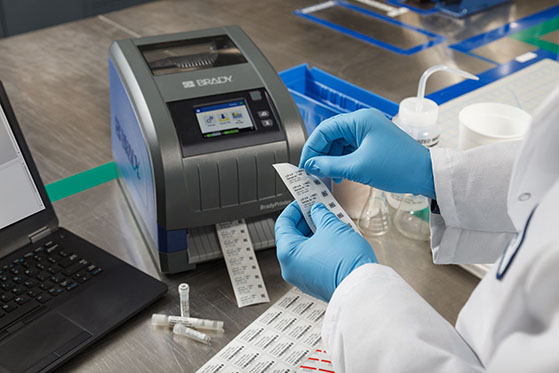
Creating a well-organized lab starts with an easy-to-understand labeling system. First, use an on-demand lab printer to create labels with text, graphics or barcodes. Then, identify your lab items. Label big batches, single specimens or try color lab labels for added visibility. Printed ID’s show techs where items are in a process: what steps are done and which ones still need to happen. And, there’s no better tool for inventory management than a scannable label. From equipment sterilization to showing which samples are part of a control group, identification is key to maintaining smooth and efficient workflows.
Though organization is central to an efficient lab, safety is an even bigger issue. Without labels:
Since many people are involved in running a lab, every chemical container, box, freezer bag, slide and test tube should have a label.
Because chemicals may be hazardous or have the potential to react negatively with certain environmental factors, it’s important to know as much as you can about them before using them. Though standards vary, labels affixed to containers should show basic information such as the name of the chemical, its concentration, hazards associated with it and the date it was prepared. And, if secondary containers are used, be sure to identify them as well. Don’t assume everyone knows what’s inside. Using a hazardous material label is a great way to improve communication about chemicals.
The ability to obtain accurate results and further scientific research depends largely on the way information is gathered. Therefore, accuracy is essential. For obvious reasons, handwritten labels pose a risk that many labs don’t want to gamble with — even if time is tight and resources are limited.
Using software to automate part of your labeling process will help save time by creating more efficient workflows. Almost instantly, Excel files can be turned into crisp, clear and readable labels. For example, Brady Workstation, a label creation software written specifically for the lab, pulls data from spreadsheets and databases, then formats it seamlessly before printing. This minimizes errors and increases the amount of time lab techs can spend on more important tasks. Getting started with label automation is easy and can be done with a software program, a printer and labels.
Often, labeling is not just specific to your own lab's needs. Rather, it’s done for regulation and compliance reasons. Make sure you’re up to date on the standards your lab should follow by checking out these resources.
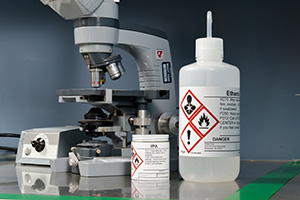
Globally Harmonized System labels communicate dangerous and hazardous material as indicated by OSHA’s updated Hazard Communication Standard. These are in pictogram form.
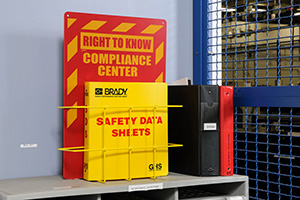
Right to Know labels inform employees of chemical hazards, as required by OSHA’s Federal Hazard Communication Standard 29 CFR 1910.1200. Popular RTK labels use a number rating and color coding system.
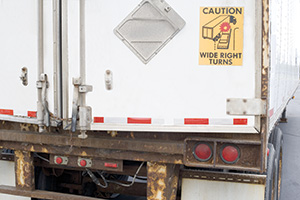
These labels ensure your shipments reach their destinations without costly delays or rejections. They comply with the regulations for safe handling and transportation of hazardous materials and meet D.O.T. HM-181 standards.
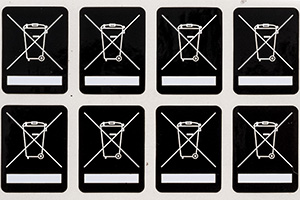
These labels are lead (Pb) free and meet the requirements of WEEE (Waste in Electrical and Electronic Equipment) and RoHS.
It’s important to get the right labels made for the conditions they’ll need to endure. From liquid nitrogen to autoclaves and harsh chemicals to hot water baths, Brady offers labels that won't smear, are easy to remove, can withstand the cold and won’t fade or fall off.
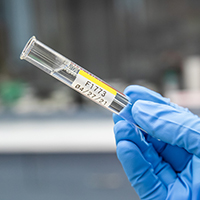
Vial labels are a critical part of every lab. The right label will have an ultra-thin material that prevents vials from jamming in centrifuges or racks. Add color for increased organization and improved efficiency.
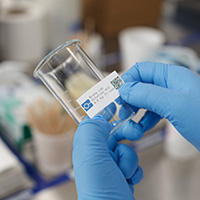
While a basic label might work for some glassware, other situations require special properties. Choose from water dissolvable labels, chemical-resistant labels or even heat-resistant labels depending on your application.
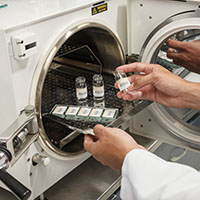
Sterilization is an important part of ensuring the safety and accuracy of your lab work. When exposed to autoclave conditions, sterilization labels will display the word "STERILIZED" so you know quickly what is ready for reuse.
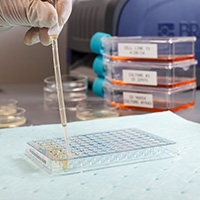
Labeling your well microplates improves placement accuracy and overall efficiency. Microplates are often exposed to a variety of conditions and using chemical-resistant or cryogenic labels might be necessary.
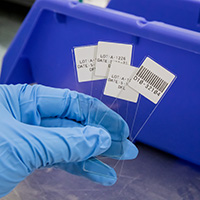
Without microscope slide labels, sample tracking and identification would be impossible. Depending on where that sample is stored, you may need freezer-resistant, solvent-resistant, or chemical resistant labels.
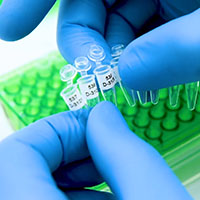
PCR tubes must also be identified with all pertinent information. Use options like self-laminating labels or labels that withstand being frozen to make sure the information on your label stays put.
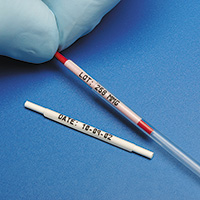
Make sure the text, graphics and barcodes on straws are protected against smearing, smudging, falling off and cryogenic cold temperatures. Use Self-Laminating Cryogenic Polyester Laboratory Labels for the best results.
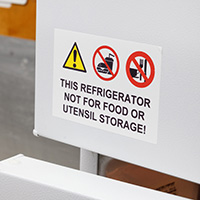
For general lab identification, you'll want choose a material that fits the application. Consider using color labels in places where at-a-glance identification or organization is important. For applications that will be frequently cleaned, disinfected, or exposed to chemicals, use a material with chemical resistance.
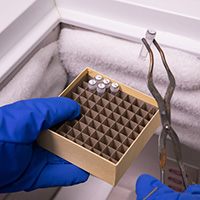
Sample identification shouldn't stop at the freezer door. If your labels can't take the cold, the accuracy of your lab could suffer. Brady B-492 Continuous Ultra Thin Polyester Laboratory Labels will adhere to rounded frozen surfaces and stay there.
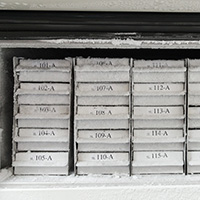
Just because something goes in the freezer, doesn't mean it can't (or shouldn't) be labeled. Place cryogenic labels like B-490 Polyester Cryogenic Laboratory Labels directly on flat, frozen surfaces.
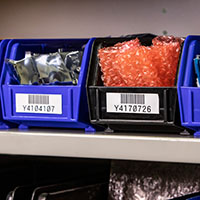
Labeling shelves and racks keeps your lab organized and running smoothly. Plus, techs can be more efficient. Use repositionable labels if you plan on re-organizing frequently. Apply aggressive adhesive labels in areas that are prone to more dirt and debris.
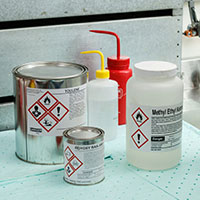
In your lab, there are various chemicals and cleaning agents that have the potential to be hazardous to employees. Make sure all hazardous materials are clearly identified using OSHA-compliant GHS labels.
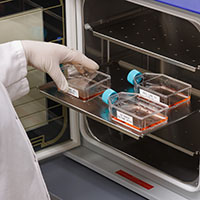
Cells that are grown in flasks or plates are often stored in incubators or stored in a biosafety cabinet. After use, they'll need disinfected. Because of this, you'll want to use a temperature and chemical resistant label that wont fall off or smear.
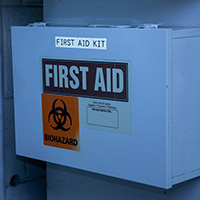
If an accident does happen in your laboratory, you'll want to make sure any safety materials are easy to find and access. Having first aid kits, eye wash stations and safety cabinets clearly identified can cut down the time it takes to find materials needed to treat injuries.
Create a more organized, accurate and safe lab with Brady print technologies, high-performance labeling solutions and intuitive label creation software. You’ll get time back with smoother workflows, less rework and more automated processes. And that’s just the beginning. Brady offers customized solutions, too, so let us know what you need.